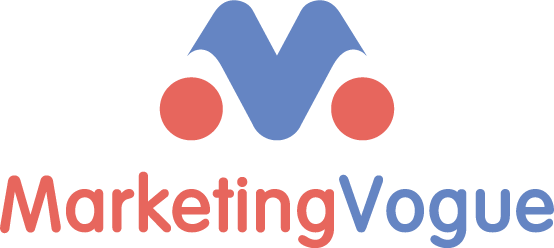In today’s marketing landscape, every buyer has an email address—but with inboxes packed to the brim, your real challenge isn’t just delivering messages; it’s making them matter. For demand generation emails, success hinges on creating interest, providing clear value, and driving action. This means writing compelling copy, presenting irresistible offers, and using strong, concise calls to action—all with one goal: moving your prospect through the funnel.
Leveling the Playing Field
The good news? Email marketing remains one of the most democratic tools in your arsenal. As Jay Schwedelson, CEO and Founder of Subjectline.com and GURU Media Hub, puts it:
“The inbox is an equal playing field… you have the same exact space as Apple, IBM, Salesforce, or the NFL.”
That means your brand, no matter its size, has an equal shot at standing out.
But with so much noise, how do you rise above the inbox clutter? The answer lies in delivering relevant, engaging, and scalable emails that feel personal—even when they’re not written 1:1.
Let’s break down the key elements of a high-performing demand gen email and the proven strategies that elevate your open rates, clicks, and conversions.
1. Subject Line: Your First—and Maybe Only—Impression
Your subject line is the gatekeeper. If it fails, nothing else matters.
Before writing anything, define who you’re talking to. Use audience segmentation—based on job title, company size, industry, or behavior—to craft subject lines that are personalized at scale.
“The sooner you can tell somebody who they are, the quicker it is that they want to engage.”
— Jay Schwedelson, The Anatomy of a Killer Demand Gen Email
Including the recipient’s first name used to be enough. Now? It’s stale. Modern personalization is about relevance and identity—showing the recipient that you understand them better than a first name ever could.
What Works: Top Tactics That Boost Open Rates
According to Schwedelson’s team at GURU Media Hub, here are four high-performing subject line tactics that consistently drive results:
- Capitalize the first word: “NEW: The 2025 Marketing Trends You Need to Know” stands out more than “New: the 2025 marketing trends…”
- Use brackets: Brackets clarify context fast. Example: “[Guide] Building Your 2025 ABM Strategy.”
- Start with a number: “3 Email Mistakes Costing You Leads” gives structure and immediate clarity.
- Keep it under three words: “Final Call,” “You’re Invited,” or “Quick Update” are short, mysterious, and clickable.
Remember: These aren’t rules—they’re ideas to test.
2. Words to Avoid in Subject Lines
Just as some words boost open rates, others drag them down.
Avoid opening subject lines with overused, uninspiring words like “learn,” “discover,” or “join.” They’ve been drained of energy. Instead, aim for bold, curiosity-driven language that feels timely and audience-specific.
Audit your past subject lines. Which ones got opens? Which flopped? Then A/B test new wording to find what actually resonates with your audience.
3. Content & Offers: Make the Click Worth It
Once the email is opened, now what?
If your content doesn’t offer clear, immediate value, you risk losing your reader. That’s why your offer—whether a guide, video, or checklist—needs to feel worth their time.
Based on performance insights from Marketing Vogue’s research and Schwedelson’s team, here are the top five content formats that outperform generic product promotions:
- Top # Lists: Clear, digestible, and curiosity-provoking.
Example: “Top 50 Content Marketing Tools of 2025.” - Most-Read Content: Social proof at work.
Example: “Our Most Read Article This Quarter.” - Checklists: Practical and actionable.
Example: “The Ultimate Demand Gen Email Checklist.” - On-Demand Videos: Easy to consume, high engagement.
Example: “Watch: How to Build High-Converting Funnels.” - Free Guides: Low risk, high value.
Example: “Download the Free Guide to ABM Personalization.”
Bonus Tip: Rethink Your Language
The way you describe your offer can make a big difference. For instance, replacing “webinar” with “Live Strategy Session” or “Insider Briefing” led to significantly higher registration rates in head-to-head tests. Small tweaks, big results.
“If email doesn’t work for you, it’s because you’re not looking at the little things. This is what matters.”
— Jay Schwedelson
4. Call-to-Action: Turn Engagement into Conversion
Your call to action (CTA) is the critical bridge between interest and conversion. So don’t treat it like an afterthought.
Use First-Person Language
Instead of “Register,” say “Save my seat.” Rather than “Download,” use “I want the guide.” This subtle shift to first person increases click-through rates by 28% or more.
Don’t Fear Longer CTAs
Short commands like “Click Here” are less engaging than full-sentence CTAs like “Yes, I want the free checklist.” These longer CTAs are conversational, confident, and human.
Final Takeaway: Test Relentlessly
There’s no silver bullet—only data and experimentation.
A/B test everything: subject lines, offers, formats, CTAs, personalization elements. Segment your audience and continuously analyze results.
As Jay Schwedelson wisely says:
“Don’t ever be nervous about testing something that doesn’t go well. Because who cares? Move on to the next one.”
Wrap-Up: Your Demand Gen Email Checklist
- ✅ Segment your audience with precision
- ✅ Write subject lines that stand out and speak directly to the reader
- ✅ Deliver offers that feel irresistible and valuable
- ✅ Use CTAs that sound human and drive action
- ✅ Test constantly and evolve your strategy based on data
By dialing in on these tactics, you’ll create demand generation emails that not only reach your audience—but drive them to act.


